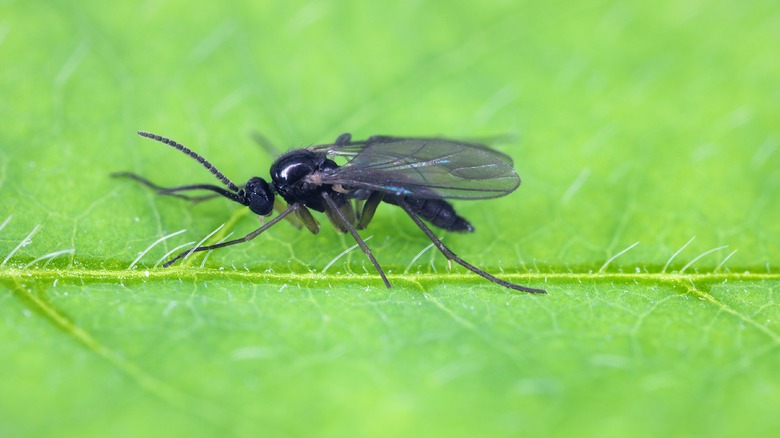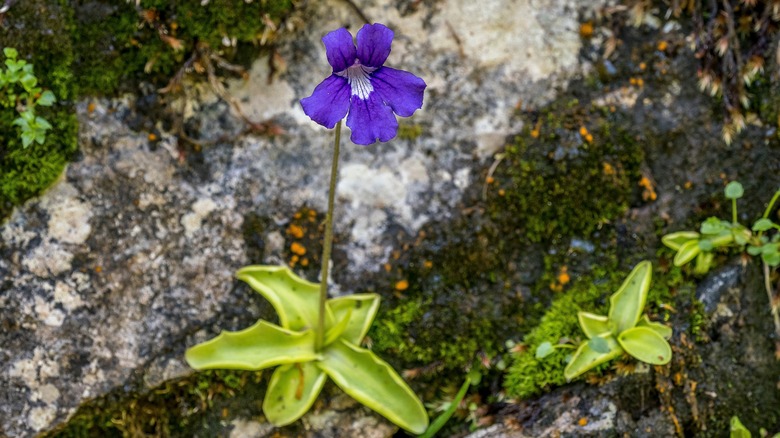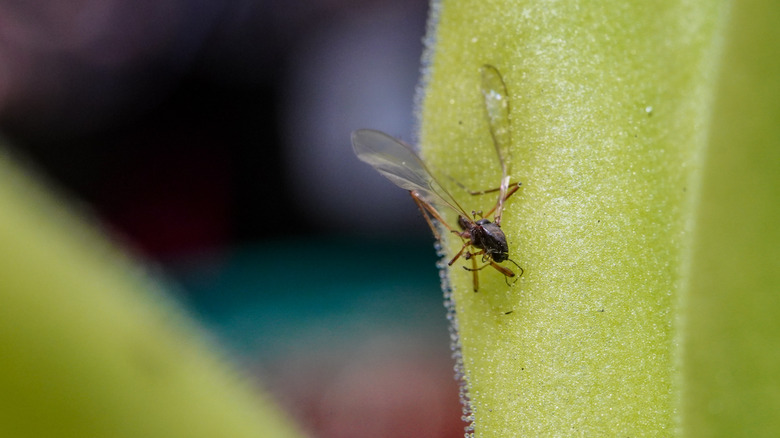The Carnivorous Plant That Banishes Fungus Gnats From Your Home
Are you looking for ways to get rid of gnats and other winged pests from your home or yard? What if we told you that you could mitigate the insect problem without resorting to any pesticides, natural or otherwise, and beautify your home in the process? That's right — by growing butterworts (Pinguicula vulgaris var. americana), you introduce a hungry, yet elegant and visually pleasing insect predator to your indoor or outdoor garden.
Pinguiculas (colloquially known as "pings") are carnivorous plants that are native to the southern regions of Mexico, but also grow in the wetter parts of the Southwestern U.S. These plants get their nutrition from insects they catch, and gnats of all sorts — including fungus gnats — are their favorite meal. Pings' leaves are covered in tiny hairs that produce mucus, which both attracts the insects and binds them to the leaf. Once an insect is trapped, the leaf it's on rolls into a tube and digests it by releasing enzymes. Apart from their intriguing (and helpful) feeding habit, pinguiculas provide plenty of visual interest, with solitary inflorescence that comprises large-petalled, colorful blooms. Below, you'll learn how to plant and care for these carnivorous plants at home and in the yard.
How to plant a pinguicula in your home or in the yard
Depending on where you live, you may have the option of growing butterworts either indoors or out. These carnivorous plants thrive in warm climates, so if you're located within the bounds of USDA zones 10a through 11b, you can grow them outdoors. In colder zones, however, you'll need to grow pinguiculas in containers to help them live through the winter cold.
If you've decided to grow the pings in your yard, find a suitable location before planting them. These carnivores don't need any nutrients in the soil, as their roots are not used to absorb nutrition — it all comes from the insects they digest. This means you don't need to worry about nutrients in the soil. In fact, butterworts flourish in poor soil. That said, pings do love moisture and humidity, so their growing site must be consistently moist. That said, proper drainage is important for these plants as their roots need to breathe and won't survive in waterlogged substrate. The location should also provide at least six hours of direct sunlight per day, although partial shade is acceptable, too.
If growing butterworts in containers, make sure each plant gets a pot that's at least 4 inches in diameter. The growing medium should comprise two parts peat, one part sand, and one part perlite. Place the container in a sunny location, such as your window sill or a greenhouse (the latter will help meet the plant's humidity requirements).
How to provide ongoing care for your pinguicula plants
Proper watering is an essential aspect of care for pinguicula plants. The type of water you give these plants matters as much as the irrigation frequency. For best results, do not irrigate pings with tap water. Instead, use water that's mineral-free; distilled water is a great choice. If the butterworts are potted, water them by filling the saucer about an inch or so, and keeping it at that level during the summer. As the cool weather sets in and the plant replaces its carnivorous foliage with succulent leaves, reduce irrigation frequency and let the soil dry out more often. The succulent leaves pack enough moisture to help the plant last through winter. Lower temperatures and dimmer light is also beneficial during winters, so you don't need to worry about replicating summer heat and humidity at this time. As the seasons change, cut dead leaves off to encourage new growth.
Feeding butterworts is generally a simple affair, but the approach is different for potted and in-ground plants. When grown outdoors, all you need to do is give the plants freedom to feed themselves, and they will catch all the insects they need. On the other hand, potted plants that live indoors may not have the same access to insects as their outdoor counterparts. To help them maintain nutrition levels, you'll need to feed them any tiny insects you can collect, such as wingless fruit flies.


